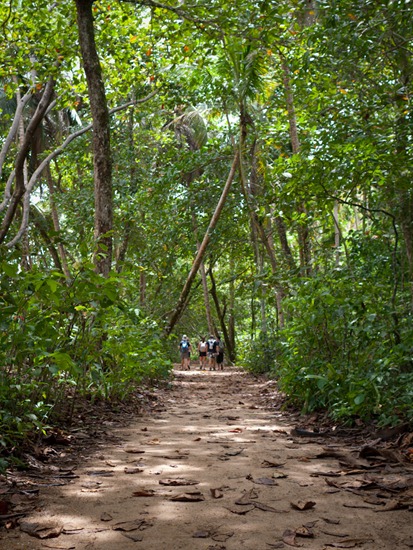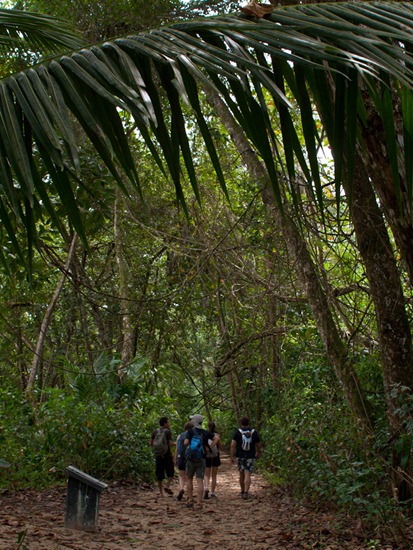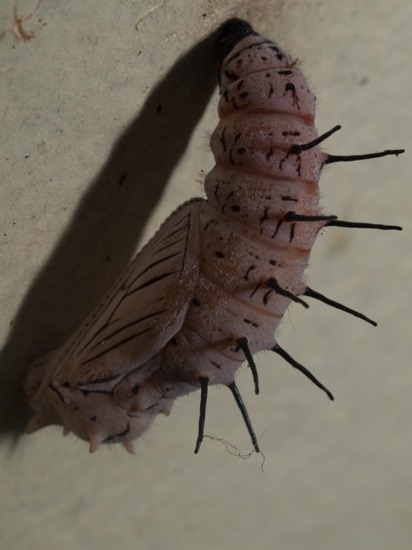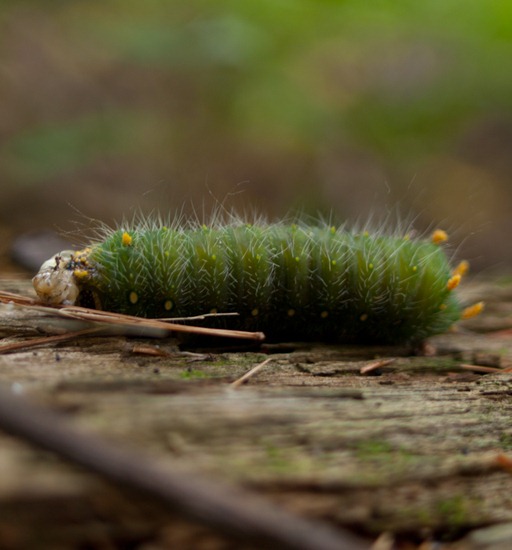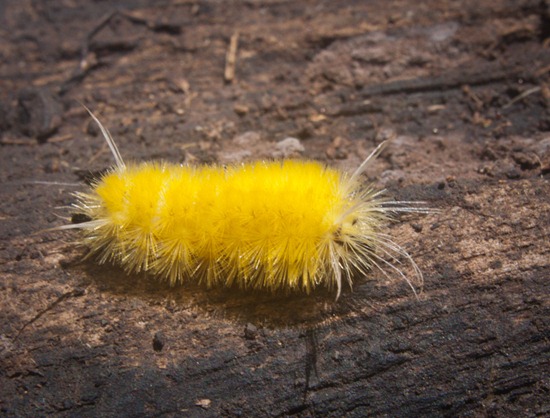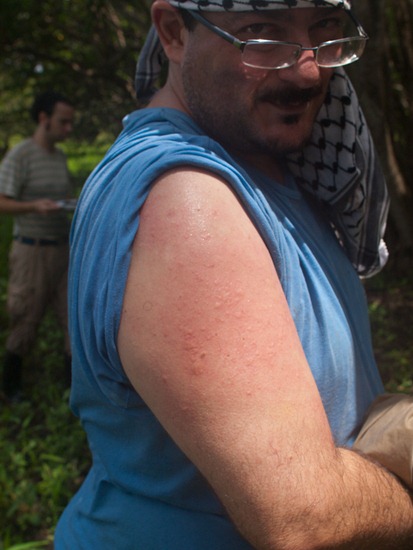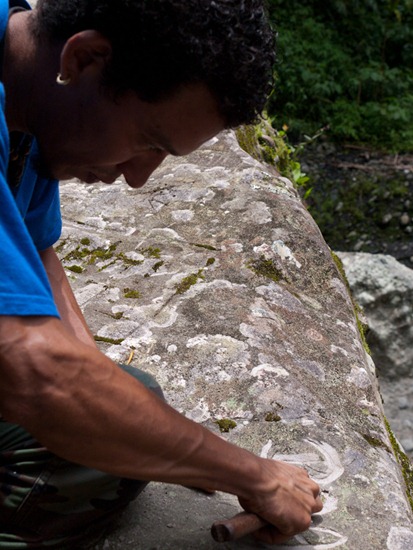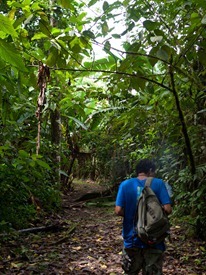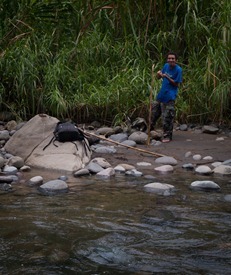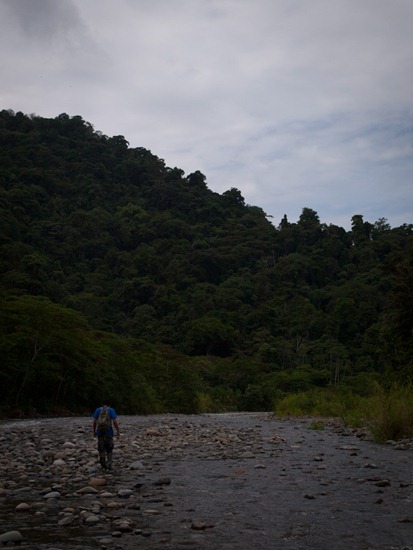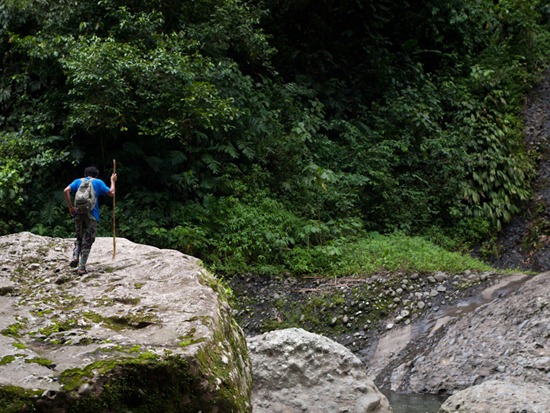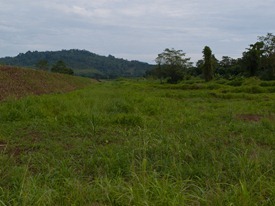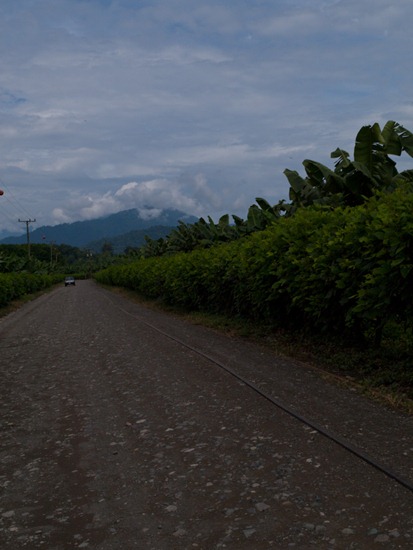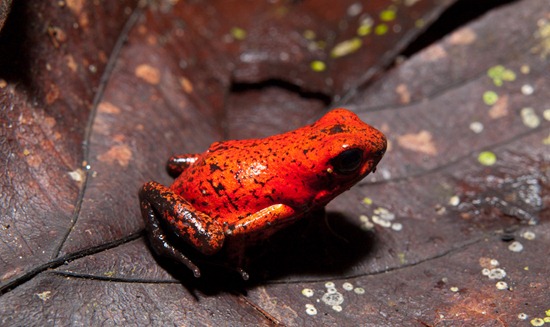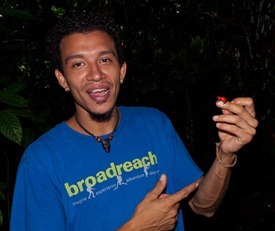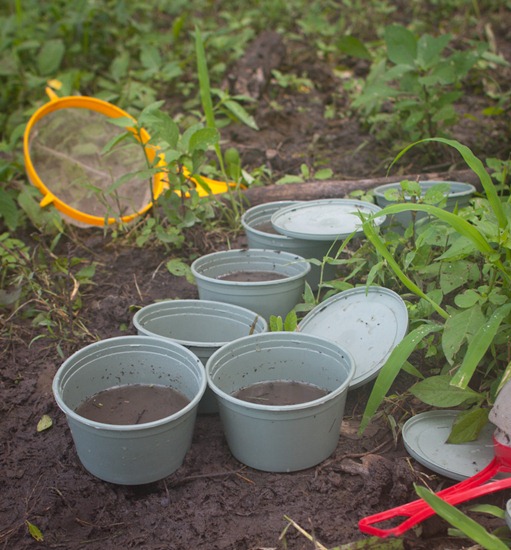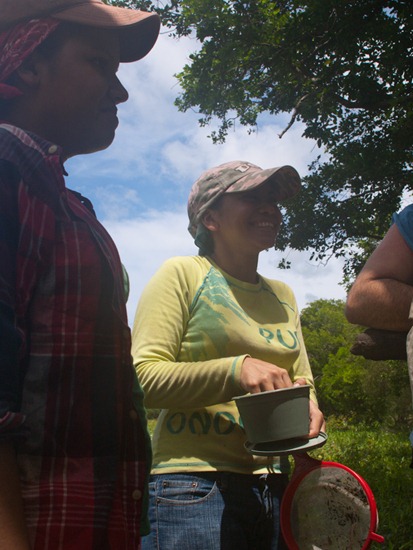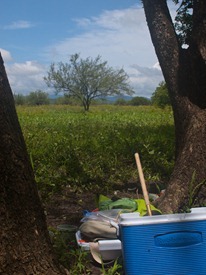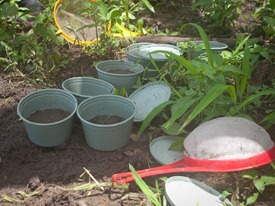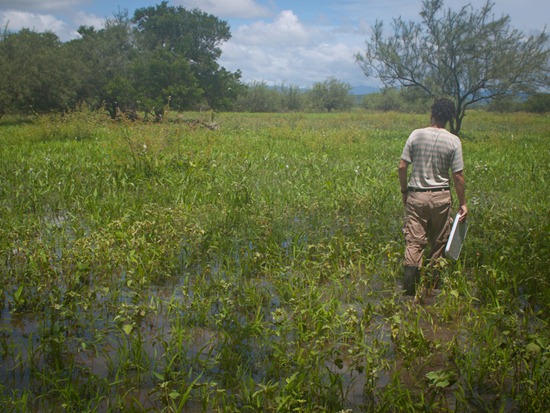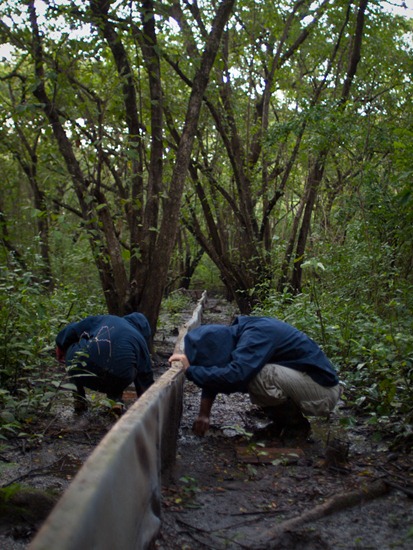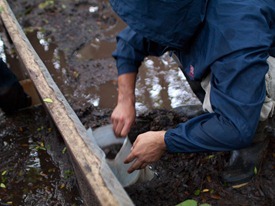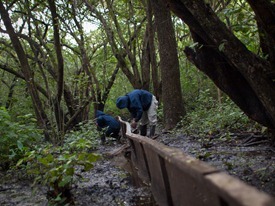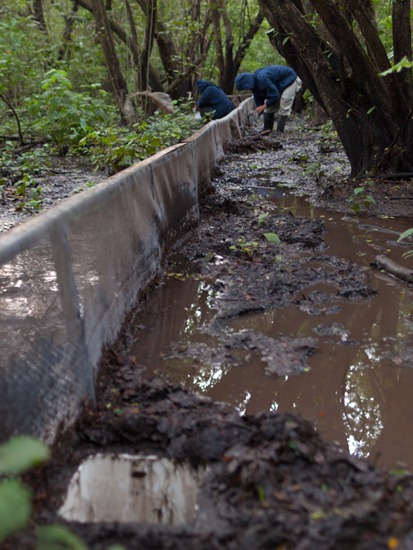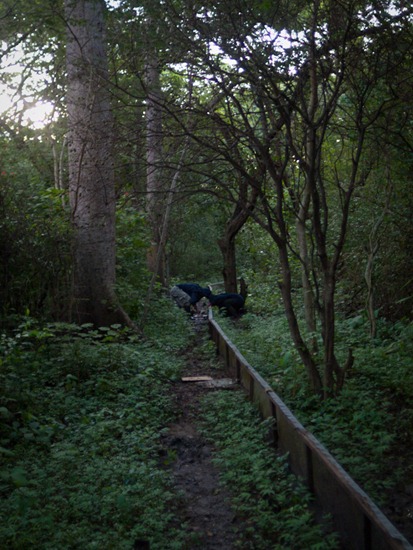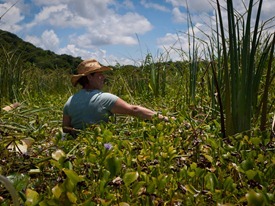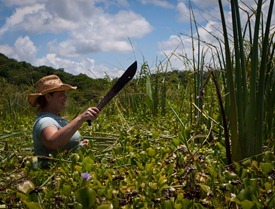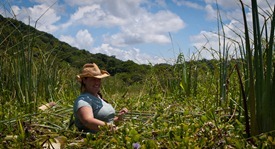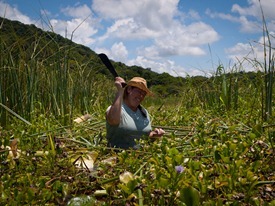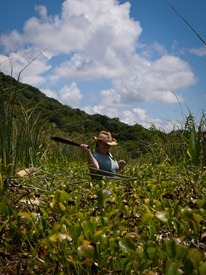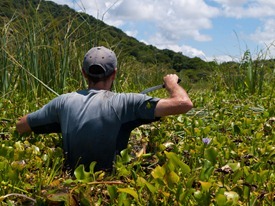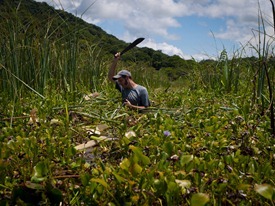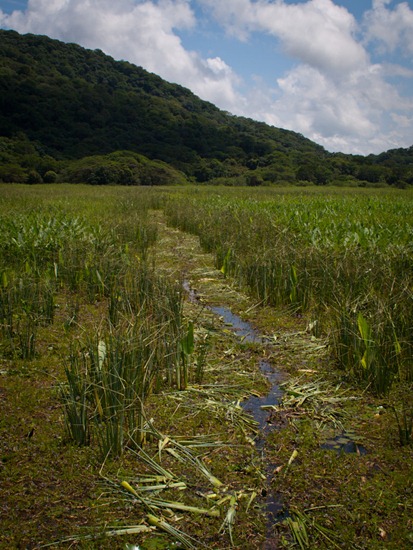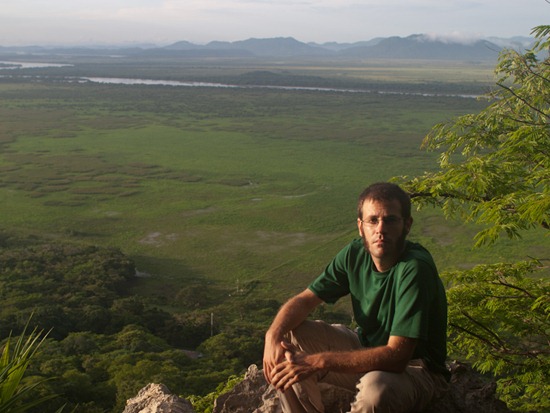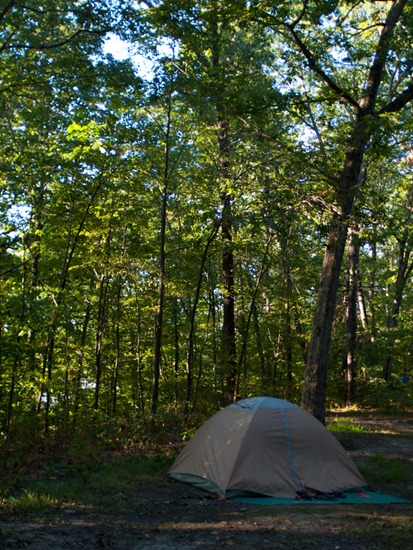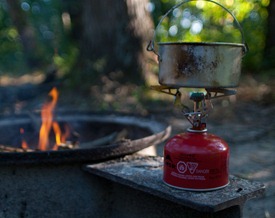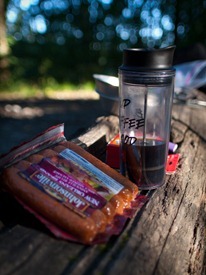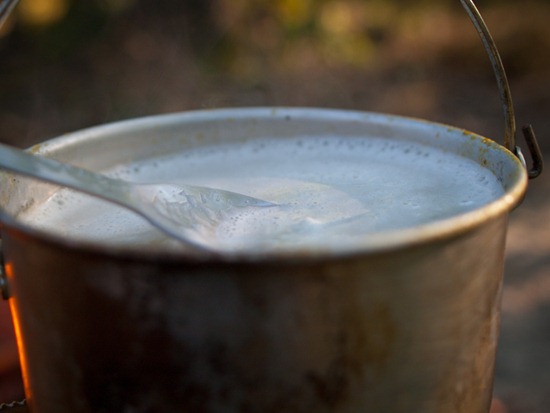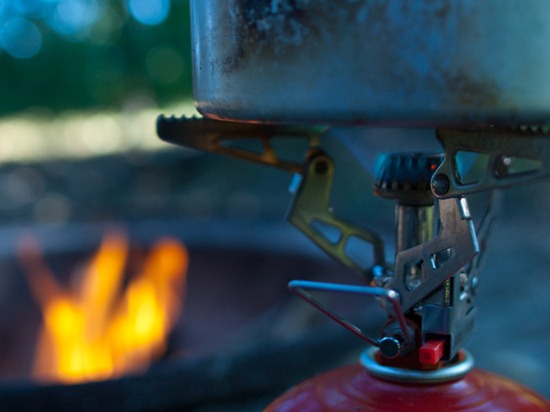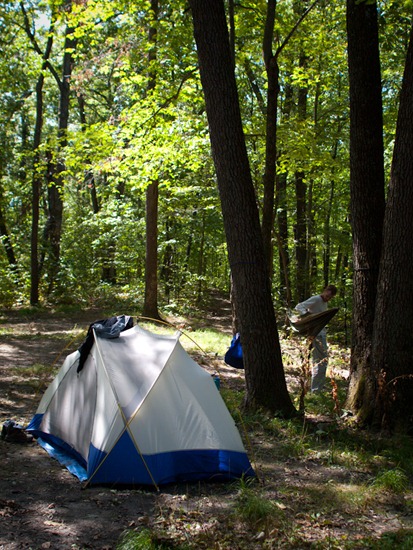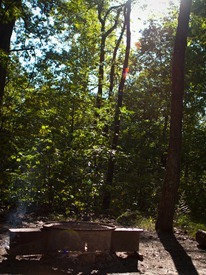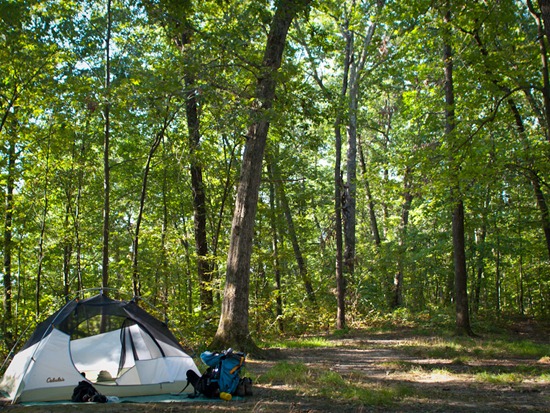Boa leads a group of four Spaniards on a tour in Cahuita National Park…. I tagged along and got an opportunity to snorkel at Cahuita’s famed reef for free.
Tag Archives: People
Immature Lepidopterans
I’ve accumulated a few photographs of caterpillars and pupa in my ‘to publish’ folder for Montegraphia, so I’m putting them up now. They’re not the greatest works, but they were all cool finds in the field. The pupa was attached to the wall of the field station in San Ramon – there are most likely several photos floating around the Internet of this pupa given that it was pointed out to the course while at the station last winter.
The green caterpillar was one of a few on the hiking path in Zaleski State Forest. It was peculiar the number of caterpillars we encountered, presumably searching for a good, safe place to pupate.
The yellow caterpillar was common in Palo Verde this summer, and would inevitably be crawling down my shirt after walking through some brush. The yellow hairs cause a rash, as shown on Mahmood’s arm, and were quite bothersome when combined with the heat, humidity and mosquitoes….
Perhaps I’ll be able to speculate on identifications after I’ve taught that section in Entomology this semester…
Evidencia
Ride out the Hitoy Cerere
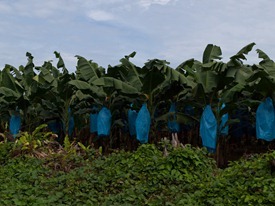 |
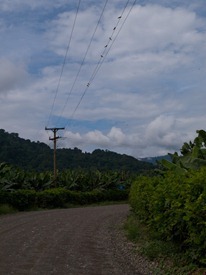 |
Oophaga pumillio and Boa
Tadpole Collection
In June, Mahmood recruited his assistants to help me collect tadpoles. We collected several hundred of about three species, most of which were Leptodactylus spp. Both Arellys and Gabi, pictured below, seemed happy to be out of the lab and in an area not completely saturated with mosquitoes. In the last photo, Rubén walks into the wetland to collect some invertebrate samples for his own work. This area is also pictured here three months later.
Frog traps
Four 120 m long frog traps have been set up for Mahmood’s amphibian survey at Palo Verde. Nightly for two years ending in December, assistants collect, weigh, measure and count frogs that have fallen into 24 buckets buried in the ground on either side of the short fences shown below. The physical conditions of the traps vary, particularly given flooding events, but the environmental conditions are always harsh. The traps are set within 50 m of the wetland (at some points, like those here, they are more in the wetland), and mosquitoes have extraordinarily high abundances. The clouds of mosquitoes require use of full, hooded jackets to keep one’s sanity, which only emphasizes the heat and humidity of the surrounding dry forest. The data collected from this survey, however, provide an understanding of amphibian community and population dynamics in a region threatened with looming and dramatic climate shifts. These communities are so understudied, that one of the most common toad species (Incilius luetkenii) present at the park have only recently be described and separated from sister species.
Here, Arellys and Sergio open traps for the nightly collection. Most frogs caught at this time of year are Engystomops pustulosus (formerly known as Physalaemus pustulosus) froglets just emerging and travelling into the dark forest.
Constructing a trail through the Thalia
Going to PV
Camping at Zaleski State Forest
This Labor Day weekend, Jenn, Matt and I went backpacking at Zaleski State Forest, Ohio. The forest is south of Wayne National Forest and surrounds parts of Lake Hope State Park. Oaks appeared to be the dominate tree in the sandy soils, particularly Swamp White Oak, and, as a result, there was a constant barrage of acorns heavily thumping on the ground around us.
Most of the trip was dedicated to eating – I brought and ate some Johnsonville sausage over rice and washed it down with some freshly made coffee using the French press below. Good stuff.

